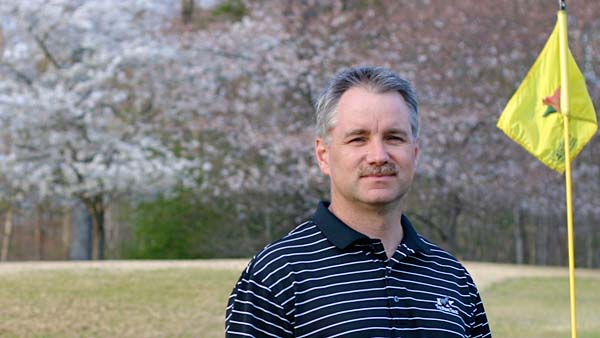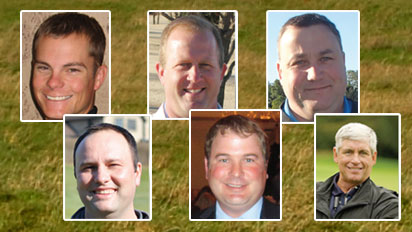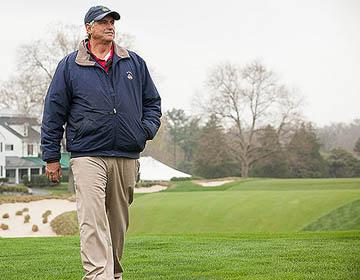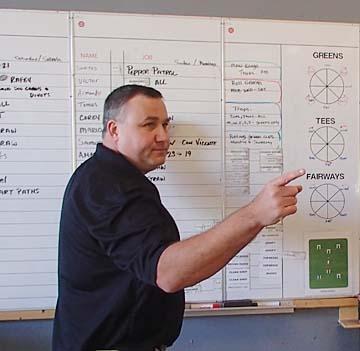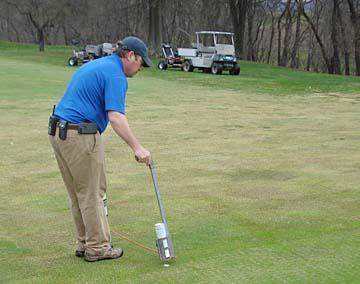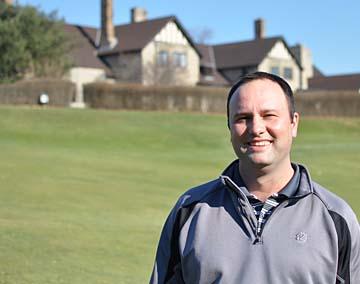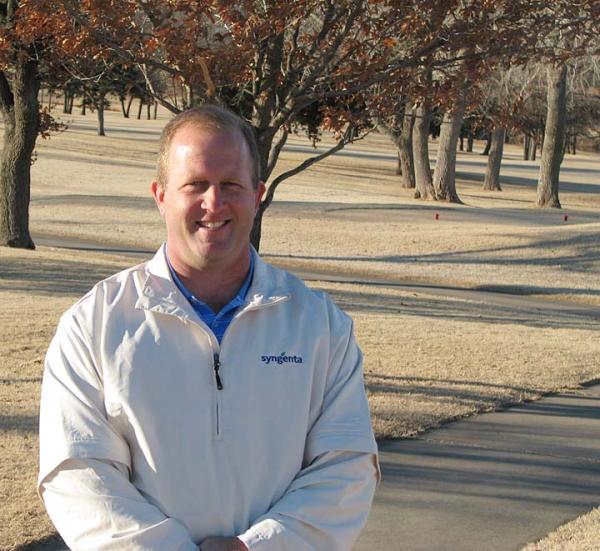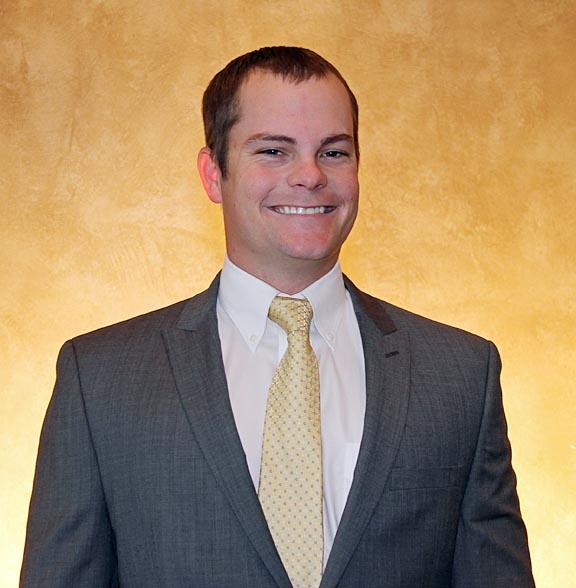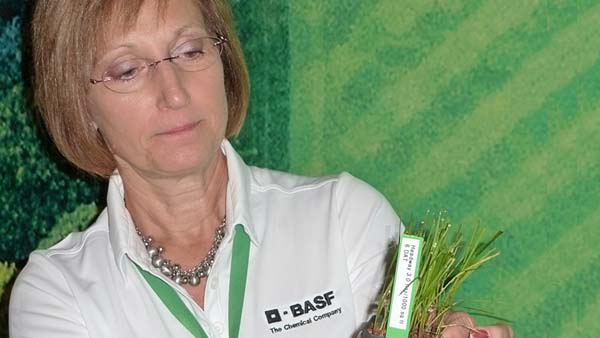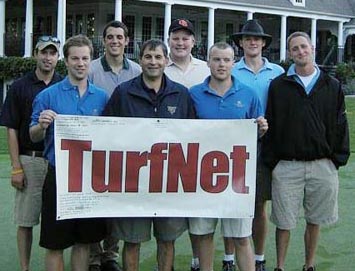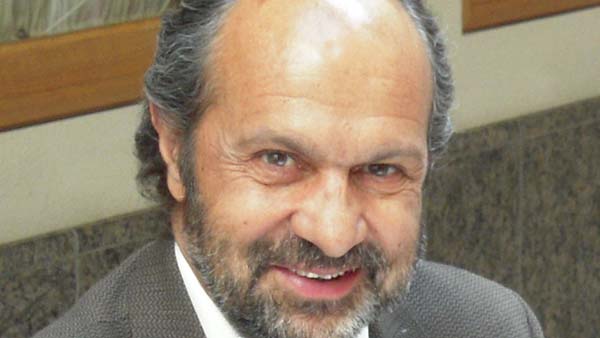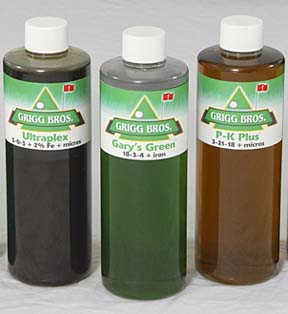
War and peace
By John Reitman, in News,
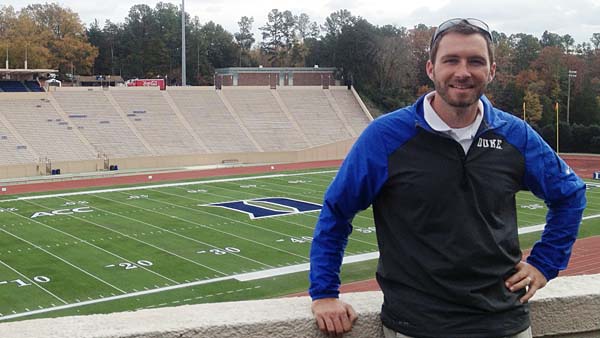
A 2006 graduate of North Carolina State University's turfgrass management program, Thompson is the head groundskeeper at Duke University, one of the Wolfpack's most hated rivals. A mere 25 miles separate Williams Hall, home base for NCSU's crop science program in Raleigh, and Duke's Wallace Wade Stadium in Durham. But that is way too close for fans who root on each school's respective athletic teams.
For Thompson, 29, Duke fits like a comfortable pair of jeans.
"Most of the people (in sports turf) around here are NC State guys," Thompson said.
"Duke has been great. I enjoy the people here most. Working with the field crews and also being able to interact with different athletic programs and staffs. This position also combines my love of athletics and turfgrass maintenance."
Thompson is in charge of maintaining 70 acres of athletic fields for seven sports teams as well as 150 additional acres of campus grounds, including Krzyzewskiville, the area around Cameron Indoor Stadium, home to the school's four-time national championship men's basketball team coached by Mike Krzyzewski.
In fact, many probably equate Duke athletics with men's basketball team, but the Blue Devils have a long legacy in other sports, including national championships in men's soccer and lacrosse. Even the school's football team has enjoyed recent success under coach David Cutcliffe, including a spot in the Chick-fil-A Bowl on New Year's Eve.
A native of Fremont, N.C., Thompson never envisioned a career in sports turf management during his days at NCSU. Instead, he majored in turfgrass management with his sights set on being a golf course superintendent. He even worked at Carolina Country Club in Raleigh and Wilson Country Club before focusing his career on sports turf management.
When Thompson and wife Kristen married six years ago, he soon realized the time dedication required to be a successful superintendent was not conducive to starting a new family, and that it was time to explore other career options in turf management if the couple wanted to see each other on a regular basis.
"It was just the timing. I never looked to get into sports. It just happened," Thompson said. "I had been a golfer. I wasn't looking for a chance to get out, but the opportunity presented itself.
"I'd just been married for a few months, and it was an opportunity to get away from that schedule of working on a golf course."
Managing turf at a Division I athletic program has its challenges as well.
Duke's natural grass fields include Wallace Wade Stadium (football) and an outdoor football practice facility, game and practice fields for men's and women's soccer and game and practice fields for men's and women's lacrosse. Duke also has synthetic turf on two lacrosse practice fields, an indoor practice field at the Yoh Football Center, at Jack Katz Stadium for field hockey, Jack Coombs Stadium for baseball and two practice fields for lacrosse.
A hands-on manager, Thompson says his first responsibility is to provide safe and aesthetically pleasing playing surfaces for Duke's student athletes. And he can't do that until he motivates members of his crew to help him.
"My biggest responsibility is to make sure my staff my staff is motivated and encouraged to be the best they can be," he said. "By doing so, they are able to perform at the highest level and maintain the fields and facilities at the same level."
Among his greatest challenges was getting acclimated to the differences between managing creeping bentgrass greens mowed at one-eighth-inch and Bermudagrass fields maintained at a half-inch.
"It was a huge learning curve," he said. "The fields are built like a golf course; grass over sand over gravel, so the concept is kind of the same. In this part of the country, you have to be on your toes. There is a lot of disease and insect pressure."
Although the same disease pressures don't exist on high-cut Bermuda, Duke's 419 is susceptible to dollar spot, pythium after turf covers are used. Even brown patch is an occasional visitor on Duke's 419 Bermudagrass soccer fields after they are overseeded with perennial ryegrass.
"We do have some disease pressure," he said.
"It isn't remotely like what the golf guys see on bentgrass."
- Read more...
- 3,052 views

